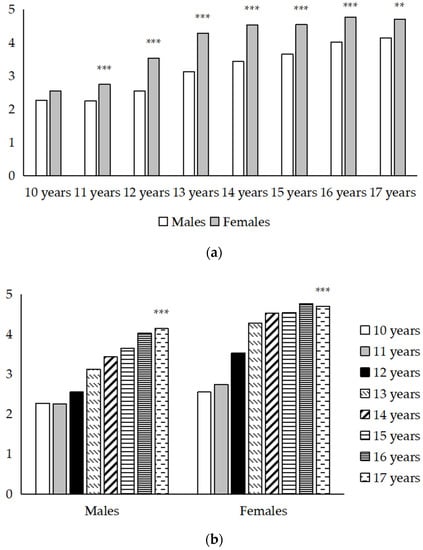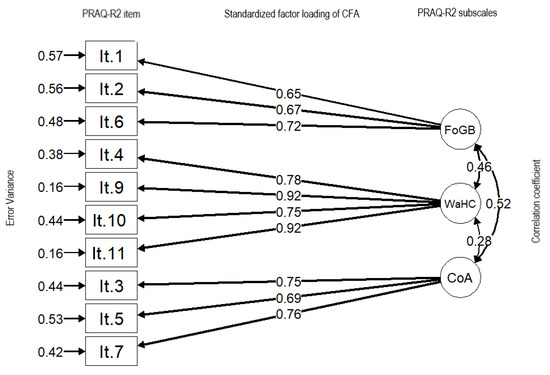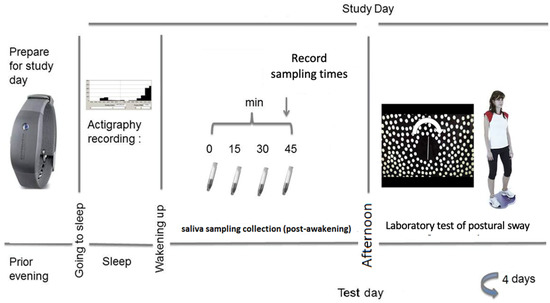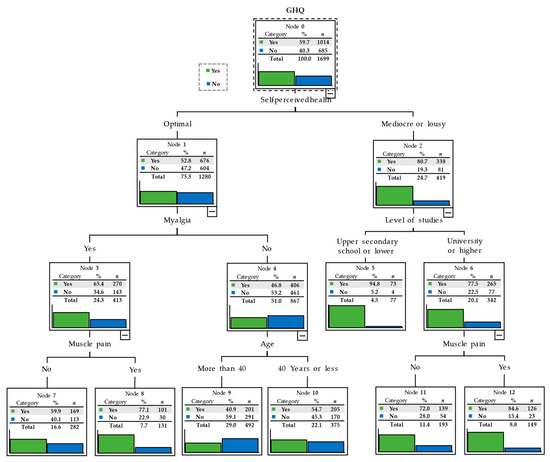Stress Management for Health
A topical collection in Healthcare (ISSN 2227-9032). This collection belongs to the section "Chronic Care".
Viewed by 31736
Share This Topical Collection
Editor
 Dr. Alyx Taylor
Dr. Alyx Taylor
 Dr. Alyx Taylor
Dr. Alyx Taylor
E-Mail
Website
Collection Editor
School of Health and Rehabilitation Sciences, AECC University College, Bournemouth BH5 2DF, UK
Interests: human stress response; mental health; neuroendocrinology; HPA-axis; neurophysiology; affective disorders; gene x environment interactions; child development; interventions for stress management; multi-modal rehabilitation for stress
Special Issues, Collections and Topics in MDPI journals
Topical Collection Information
Dear Colleagues,
People all over the world can encounter potentially challenging or stressful events and situations. The risk of being affected by stress begins before birth and continues throughout life. The systems of the body are coordinated to facilitate rapid mental processing and musculoskeletal actions as soon as a threat is perceived. These physiological responses to manage or avoid such stressors are natural and potentially life-saving. However, for modern society, the natural responses are not always appropriate. Furthermore, if the stressors are not overcome and the physiological response persists for extended periods of time, the mental and/or the physical health of the individual can be impaired. Such impairment can reduce the quality of life for the individual and place a burden of care on their family, health professionals and the community. Research data from developed countries have been used to estimate that the financial burden of reduced productivity and increased healthcare costs consume a small but significant percentage of gross domestic product annually. On the positive side, researchers are developing low-cost, effective interventions for stress management in all areas of life. Increasing the successful management of stress would not only improve the health and quality of life for the individuals concerned, but reduce the burden of cost on society. This collection brings together current research into all aspects of stress management for mental and physical health.
Dr. Alyx Taylor
Collection Editor
Manuscript Submission Information
Manuscripts should be submitted online at www.mdpi.com by registering and logging in to this website. Once you are registered, click here to go to the submission form. Manuscripts can be submitted until the deadline. All submissions that pass pre-check are peer-reviewed. Accepted papers will be published continuously in the journal (as soon as accepted) and will be listed together on the collection website. Research articles, review articles as well as short communications are invited. For planned papers, a title and short abstract (about 100 words) can be sent to the Editorial Office for announcement on this website.
Submitted manuscripts should not have been published previously, nor be under consideration for publication elsewhere (except conference proceedings papers). All manuscripts are thoroughly refereed through a single-blind peer-review process. A guide for authors and other relevant information for submission of manuscripts is available on the Instructions for Authors page. Healthcare is an international peer-reviewed open access semimonthly journal published by MDPI.
Please visit the Instructions for Authors page before submitting a manuscript.
The Article Processing Charge (APC) for publication in this open access journal is 2700 CHF (Swiss Francs).
Submitted papers should be well formatted and use good English. Authors may use MDPI's
English editing service prior to publication or during author revisions.
Keywords
- psychological intervention
- physical activity
- stress management app
- online intervention
- pathology of stress
- biochemical pathway
- anxiety
- depression
- social support
Published Papers (7 papers)
Open AccessArticle
Influence of Coping and Self-Efficacy in Inflammatory Bowel Disease
by
Estela Muñoz González, Carlos Durantez-Fernández, Lucía Pérez-Pérez and María José de Dios-Duarte
Cited by 2 | Viewed by 1696
Abstract
(1) Background: Coping includes the specific cognitive processes and behaviours that the patient uses when faced with the stress of living with a chronic disease. Self-efficacy is the knowledge that individuals have about their abilities and their confidence to face a problem or
[...] Read more.
(1) Background: Coping includes the specific cognitive processes and behaviours that the patient uses when faced with the stress of living with a chronic disease. Self-efficacy is the knowledge that individuals have about their abilities and their confidence to face a problem or cope with a situation (disease). The aim of this study was to explore the role of coping and self-efficacy in inflammatory bowel disease. (2) Materials and Methods: A total of 92 participants were included (33 had been diagnosed with Crohn’s disease, 23 with ulcerative colitis and 36 were healthy participants). The Coping Strategies Inventory was used to measure which coping strategies were employed, differentiating them as active or passive. The General Self-Efficacy Scale was used to measure self-efficacy. (3) Results: The results indicate that people with inflammatory bowel disease used strategies related to passive coping more than healthy people (mean of 36.39 ± 13.92 vs. 29.77 ± 10.70,
p = 0.017). Additionally, people with inflammatory bowel disease used social withdrawal more than healthy participants (mean of 8.30 ± 5.07 vs. 4.47 ± 4.17,
p < 0.001). In addition, there are significant differences in emotion-focused engagement coping strategies. People with inflammatory bowel disease used this strategy less than healthy people (mean of 21.77 ± 7.75 vs. 25.03 ± 7.00,
p = 0.044). Finally, healthy participants used the emotion-focused disengagement strategy less than those diagnosed with inflammatory bowel disease (mean of 9.81 ± 7.74 vs. 15.61 ± 10.14,
p = 0.004). (4) Conclusions: Actions aimed at the development of active coping strategies and patient socialisation must be included in the treatment of inflammatory bowel disease.
Full article
Open AccessArticle
Psychometric Properties of the Generalized Anxiety Disorder Scale-7 Item (GAD-7) in a Large Sample of Chinese Adolescents
by
Jiangang Sun, Kaixin Liang, Xinli Chi and Sitong Chen
Cited by 100 | Viewed by 9805
Abstract
Anxiety symptoms are common among adolescents. A well-validated and easy-to-use tool is indispensable to measure and detect anxiety for timely interventions. The Generalized Anxiety Disorder Scale-7 item (GAD-7) is a self-report scale used to measure the severity of anxiety and has been validated
[...] Read more.
Anxiety symptoms are common among adolescents. A well-validated and easy-to-use tool is indispensable to measure and detect anxiety for timely interventions. The Generalized Anxiety Disorder Scale-7 item (GAD-7) is a self-report scale used to measure the severity of anxiety and has been validated in adult populations, but psychometric properties of the GAD-7 remained rarely tested in adolescents. The study aimed to investigate the reliability and validity of the GAD-7 in Chinese adolescents. Sex- and age-specific analyses were conducted in a large sample of adolescents (
n = 67,281, aged 10–17 years). Our results showed that the GAD-7 scores were higher in female and older adolescents. The GAD-7 presented good internal consistency and a unidimensional structure across sex- and age-specific groups. The GAD-7 scores were significantly correlated with the scores of the Patient Health Questionnaire-9 item (PHQ-9, a self-reported scale to measure depression symptoms) in all subgroups, indicating acceptable criterion validity. In conclusion, the GAD-7 is a scale with good psychometrics and can serve as a tool for anxiety screening in Chinese adolescents at the populational level.
Full article
►▼
Show Figures
Open AccessArticle
Burnout, Attachment and Mentalization in Nursing Students and Nurse Professionals
by
Giulia Bordoagni, Edita Fino and Alessandro Agostini
Cited by 11 | Viewed by 3486
Abstract
(1) Background. In caretaking professions, attachment style and mentalization capacities are essential factors for establishing an effective caretaker–patient relationship and for buffering burnout. While attachment avoidance and dependency are considered risk factors for burnout, impairment in mentalization capacity is associated with psychological distress
[...] Read more.
(1) Background. In caretaking professions, attachment style and mentalization capacities are essential factors for establishing an effective caretaker–patient relationship and for buffering burnout. While attachment avoidance and dependency are considered risk factors for burnout, impairment in mentalization capacity is associated with psychological distress and ineffective emotion regulation. (2) Objective: Evaluating the attachment style and mentalization capacity in nurse professionals and nursing students. We further investigated the impact of these factors on burnout in professional nurses. (3) Method: 94 nursing students and 94 controls and 34 professional nurses completed the Attachment Style Questionnaire (ASQ) and the Reflective Functioning Questionnaire (RFQ). For professional nurses, the Maslach’s Burnout Inventory (MBI) was also administered. (4) Results: Nursing students exhibited lower scores in secure attachment and higher scores in anxiety over relationships compared to controls while no difference in mentalization capacity was found between both groups. Importantly, attachment anxiety resulted a significant predictor of burnout in professional nurses. (5) Conclusions: Nursing students might compensate their attachment insecurity with high mentalization. Attachment security may play a protective role against burnout in the professional nurses. Education programs aimed at enhancing mentalizing abilities might facilitate nursing students’ entrance in the forthcoming clinical environment and practice. Implementing training strategies based on attachment theory may contribute to burnout prevention in nurse professionals.
Full article
Open AccessArticle
Associations of 24-Hour Movement Behavior with Depressive Symptoms and Anxiety in Children: Cross-Sectional Findings from a Chinese Sample
by
Shenghua Lu, Boris Cheval, Qian Yu, Md Mahbub Hossain, Si-Tong Chen, Alyx Taylor, Ran Bao, Scott Doig, Jinming Li, Ting Wang, Zhe Yan, Jin Kuang, Can Jiao and Liye Zou
Cited by 23 | Viewed by 3051
Abstract
This study examined the associations between adherence to 24-hour movement behavior guidelines (24-HMB) and the mental-health-related outcomes of depressive symptoms and anxiety in Chinese children. Data on movement behavior from 5357 children (4th and 5th grades), including physical activity, recreational screen time and
[...] Read more.
This study examined the associations between adherence to 24-hour movement behavior guidelines (24-HMB) and the mental-health-related outcomes of depressive symptoms and anxiety in Chinese children. Data on movement behavior from 5357 children (4th and 5th grades), including physical activity, recreational screen time and sleep, were self-reported using the Health Behavior School-Aged Children Survey. Depressive symptoms and anxiety were self-reported using the Chinese version of the nine-item Patient Health Questionnaire and the Generalized Anxiety Disorder Scale, respectively. Depressive symptoms and anxiety were treated as categorical variables. Only 3.2% of the participants met physical activity, screen time, and sleep 24-HMB guidelines. Ordinal logistic regressions showed that, compared with participants who met the 24-HMB guidelines, participants who met none (odds ratio (OR) = 2.62, 95% CI: 1.76–3.90) or any one of the guidelines (OR = 1.88, 95% CI: 1.27–2.77) had higher odds of depressive symptoms. Similarly, there were higher odds of anxiety in participants who met none (OR = 2.32, 95% CI: 1.45–3.70) or any one of the recommendations (OR = 1.62, 95% CI: 1.03–2.57) compared with participants who met all the 24-HMB guidelines. Meeting the 24-HMB guidelines is associated with better mental-health-related outcomes in Chinese children. Because of the low prevalence of Chinese children meeting the 24-HMB recommendations, the present findings highlight the need to encourage children to regularly engage in physical activity, decrease their time spent sitting, and improve their sleep patterns.
Full article
Open AccessArticle
Polish Adaptation of the Pregnancy-Related Anxiety Questionnaire—Revised 2 for All Pregnant Women
by
Anna Michalik, Lucyna Wójcicka, Agata Zdun-Ryżewska, Agnieszka Czerwińska-Osipiak, Michał Krzemiński, Jolanta Olszewska, Dagmara Klasa-Mazurkiewicz and Anja C. Huizink
Cited by 5 | Viewed by 3043
Abstract
Pregnancy-related anxiety (PrA) is a specific type of anxiety characteristic of the perinatal period. PrA can affect pregnancy and birth. However, no validated tool exists to measure PrA in Polish obstetric practice. The aim of this study was to translate the Pregnancy-Related Anxiety
[...] Read more.
Pregnancy-related anxiety (PrA) is a specific type of anxiety characteristic of the perinatal period. PrA can affect pregnancy and birth. However, no validated tool exists to measure PrA in Polish obstetric practice. The aim of this study was to translate the Pregnancy-Related Anxiety Questionnaire—Revised 2 (PRAQ-R2) into Polish and to evaluate its reliability and factorial and construct validity. This study was conducted in Poland as an online questionnaire in April 2020 and included 175 healthy women. To validate the PRAQ-R2, we used standardized tools for the measurement of general anxiety: the modified Visual Analog Scale (VAS), the Ten-Item Personality Inventory (TIPI), and the Hospital Anxiety and Depression Scale (HADS). Scale reliability was assessed using Cronbach’s alpha. Concurrent validity was evaluated by calculating Spearman’s rho correlation coefficients. Statistical analyses were performed using R ver. 4.0.2. Values for comparative fit index >0.90, Tucker–Lewis index >0.90, and root mean square error of approximation <0.08 indicated acceptable model fit, confirming the reliability of the three-factor structure of the translation. The subscales and total scores had good consistency (α > 0.7), and convergent validity was demonstrated. The PRAQ-R2 as translated into Polish represents the first validated tool in Poland to measure PrA for all pregnant women.
Full article
►▼
Show Figures
Open AccessArticle
Smaller Cortisol Awakening Responses Are Associated with Greater Visual Dependence in Postural Control
by
Nina Smyth, Monica Milani, Lisa Thorn, Maria Flynn, John F. Golding, Phil Evans and Angela Clow
Cited by 1 | Viewed by 1973
Abstract
There are known links between the hypothalamic–pituitary–adrenal (HPA) axis and systems responsible for regulating posture. Our aim was to explore directly, for the first time, whether an aspect of circadian HPA axis activity (the cortisol awakening response: CAR) was associated with greater visual
[...] Read more.
There are known links between the hypothalamic–pituitary–adrenal (HPA) axis and systems responsible for regulating posture. Our aim was to explore directly, for the first time, whether an aspect of circadian HPA axis activity (the cortisol awakening response: CAR) was associated with greater visual dependency in postural control. For measurement of the CAR, electronically monitored saliva samples were collected by participants following morning awakening in their home environment. On the afternoons of the same days, postural sway was measured in the laboratory by exposing participants to static (control) and moving visual stimuli whilst standing still and upright on a force platform. Visual dependence was assessed as the increase in postural sway (path length) during exposure to the moving compared with the static condition. The 44 measurement days were derived from four days for each of eleven healthy participants (mean ± SD age: 51.18 ± 3.3 years). As expected, postural sway was greater when exposed to moving versus static cues. Mixed regression modelling showed that participants with smaller four day average CARs had greater deterioration in postural sway when presented with moving stimuli. These data are the first to document associations between the CAR and visual dependency in postural sway.
Full article
►▼
Show Figures
Open AccessArticle
Effects of the COVID-19 Pandemic on Mental Health in Peru: Psychological Distress
by
Carlos Ruiz-Frutos, Juan Carlos Palomino-Baldeón, Mónica Ortega-Moreno, María del Carmen Villavicencio-Guardia, Adriano Dias, João Marcos Bernardes and Juan Gómez-Salgado
Cited by 23 | Viewed by 7047
Abstract
This pandemic has been classified as a “psychological pandemic” that produces anxiety, depression, post-traumatic stress disorder, and sleep disorders. As the mental health effects of the Coronavirus Disease 2019 (COVID-19), caused by SARS-CoV-2, continue to unfold, there are still large knowledge gaps about
[...] Read more.
This pandemic has been classified as a “psychological pandemic” that produces anxiety, depression, post-traumatic stress disorder, and sleep disorders. As the mental health effects of the Coronavirus Disease 2019 (COVID-19), caused by SARS-CoV-2, continue to unfold, there are still large knowledge gaps about the variables that predispose individuals to, or protect individuals against the disease. However, there are few publications on the effects of the COVID-19 pandemic on the mental health of citizens in Latin American countries. In this study, the effects that COVID-19 had on citizens of Peru have been described. For this, 1699 questionnaires, collected between 2 April and 2 September 2020, were analyzed. Descriptive, bivariate analysis was performed with odds ratio (OR) calculations and a data mining methodology. Sociodemographic variables (from the General Health Questionnaire), health conditions and perception, symptoms, and variables related to contact and preventive measures regarding COVID-19 were analyzed. As compared to other countries, less affectation of mental health and increased use of preventive measures were observed. It has been suggested that the country’s precarious health system and poverty rates prior to the pandemic may justify higher mortality figures in Peru than in other Latin American countries, despite prompt action for its containment and compliance with the protective measures. Psychological distress had a greater incidence in women, young people, people without a partner, and people without university studies. The most significant conditioning variables were self-perceived health status, headache or muscle pain over the past 14 days, level of studies, and age. The extensive use of preventive measures against COVID-19 is in line with the strict legislative measures taken, and this is, in turn, in line with other countries when looking at the lower effect on mental health, but contrary when focusing on the high lethality identified. The need to include the economy or availability and quality of healthcare in future studies arises, as well as the suitability to analyze the cause for differences between countries.
Full article
►▼
Show Figures










